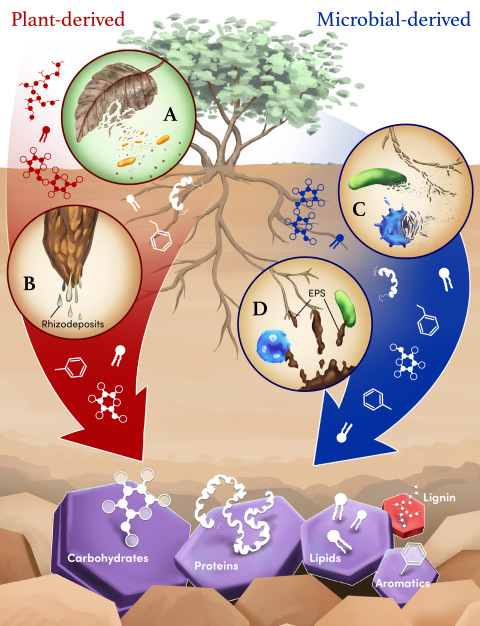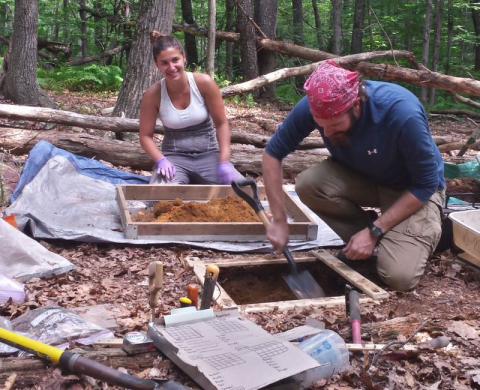Our knowledge of soil biogeochemistry and microbial ecology starts at the tiniest scales where occur the processes controlling productivity and crop yields and global soil carbon cycling. A single teaspoon of soil can have the surface area of a football field.

Artwork by Elena Hartley (elabarts.com)
A teaspoon of soil has the surface area of a football field. Zooming in, we can look at the microscopic world where the soil biogeochemical and microbial processes that control ecosystem productivity, crop yields, and the global soil carbon cycle begin. It is a rugged terrain with sharp peaks and winding caverns, teeming with millions of microbes from thousands of species. Microbes compete and cooperate with one another and fall prey to soil animals including single-celled amoebae, worm-like nematodes, and tiny insects, many of whom also prey on one another.
As we scale out from the truly microscopic to somewhat larger scales, these biogeochemical interactions between organisms and soil minerals are further influenced by the presence of plant roots and their special plant symbiotic fungi known as mycorrhizae. Plants pump carbon below ground where microbes can use it, hide it among the peaks and valleys, or transfer it back to the atmosphere as greenhouse gases, namely carbon dioxide or methane. Soil cycling of massive amounts of organic and inorganic nitrogen between mineral surfaces, microbes, and plants, also drives plant productivity as well as emissions of the potent greenhouse gas nitrous oxide.
